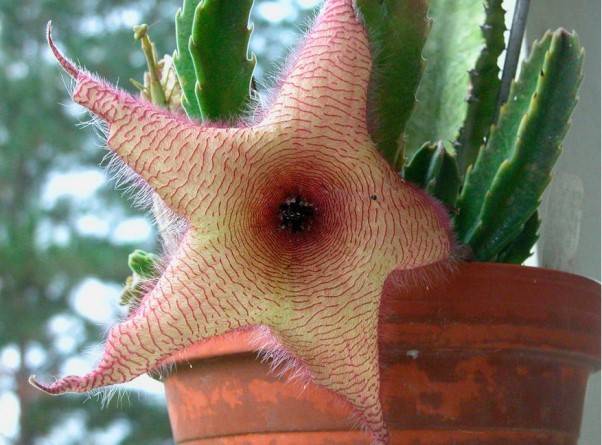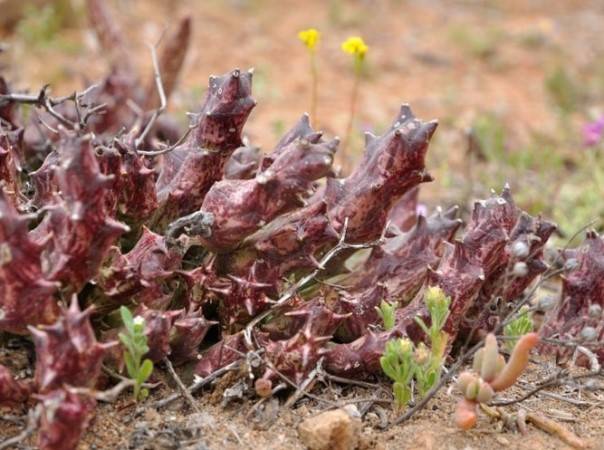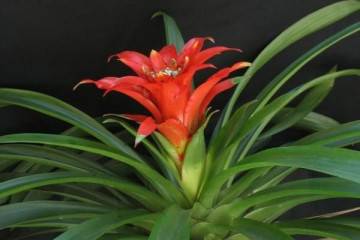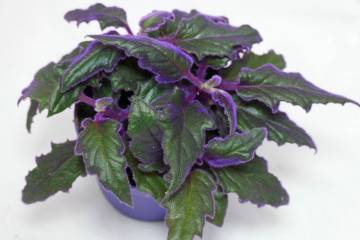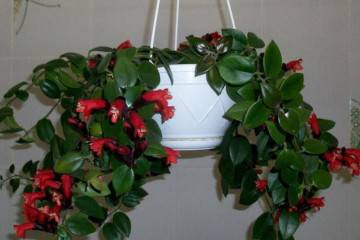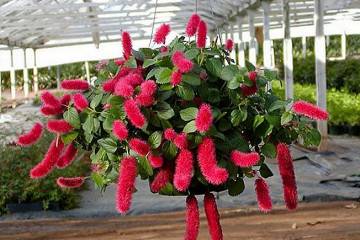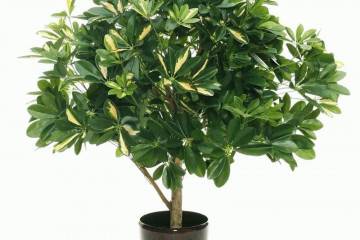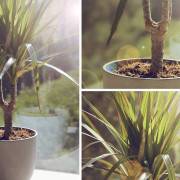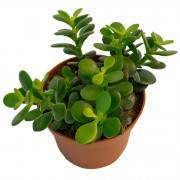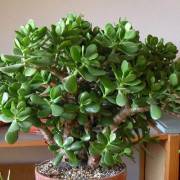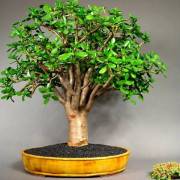Stapelia flower - home care
Content:
Stapelia is a flower that is rarely found in indoor propagation of amateur flower-growers. The thing is that during the flowering period the plant exudes a putrid aroma. Nevertheless, even this exotic has fans. The article will discuss the care of this unusual culture.
What does the slipway look like: a description of the plant
Stapelia belongs to the Kutrov family, which are one of the varieties of succulents. It is a tropical species found naturally in the southern latitudes of Africa.
A perennial bush with tetrahedral fleshy shoots reaches a height of 60 cm. On the ribs of the stems there are soft thin shoots. The color of the crown is dark purple, due to the lack of leaves, the flower is sometimes confused with a cactus.
Large five-pointed flowers up to 30 cm in diameter bloom at the tops of the pedicels. During flowering, the stapelia emits an unpleasant odor that attracts insects.
Common varieties
There are about 100 types of stocks in nature. The most common ones are listed below.
- The stapelia of grandiflora grows up to 15 cm in length, there are rows of notches on the edges of the stems. On long pedicels, 2 huge flowers appear at the same time, in the form of stars. The inflorescences of stapelia grandiflora have a dark red hue, the curved petals are dotted with burgundy villi, which makes the flowers look fluffy.
- Giant stapelia is called so because of the impressive size of the flower - up to 35 cm in diameter. Stapelia gigantea looks like a bush of erect stems, resembling fleshy sticks up to 20 cm high. The flower looks like a five-pointed yellow star covered with red hairs.
- Stapelia variegated or variegata in height reaches only 10 cm. Green branches are inconspicuous, with denticles on the edges. For one flowering, up to 5 large flowers appear, which hang on the legs. The petals are pale yellow with burgundy small spots, which give the staples a tiger hue.
Caring for varieties is equally unpretentious. When the bush is rejuvenated, the plant can bloom annually.
Features of home care
The quality of life of the culture and the frequency of flowering depend on the amount of heat, light and moisture. After shedding flowers, the stems on which they were located must be removed. This is done because the buds on them will no longer be tied, and pruning has a beneficial effect on the development of the bush.
Temperature
It should be borne in mind that the succulent stapelia is a crop that is subject to seasonal changes.
The level of heat in the room must be selected depending on the season:
- In the summer, they maintain +22 .. + 26 in the room, the content on the balcony has a beneficial effect.
- The temperature of the content in winter varies from +10 to +14 degrees. Perhaps a short-term location of the pot within +7 degrees.
Lighting
The flower requires a lot of light, but if it hits the stems of direct sunlight, it can get burned. Therefore, on the south side, the flowerpot must be shaded.
If the stem turns from green to burgundy or purple, this indicates supersaturation with sunlight and the destruction of chlorophyll in the cells of the plant.
In winter, it is recommended to turn the pot towards the sun, changing the angle of illumination. This is done to avoid tilting the stems to one side.
Watering
In summer, moderate watering is provided - once a week. The substrate needs to be checked for moisture, if the ground is dry, water the flower.
In winter, the amount of moisture is reduced. In cool rooms, the plant is not watered at all, especially in December - January.
Humidity
Succulents do not like excess air humidity. There is no need to spray the crown of the slipway; care should be minimal.
A warm shower in the bathroom will not hurt, but this should be done once a year in the summer to wash the dust off the branches.
Priming
The culture is not demanding for the quality of the soil. It is enough to plant the flower in cactus soil, which is sold in garden stores.
The composition is prepared independently by mixing coarse sand and turf soil in a 1: 2 ratio. The substrate must be sterilized before planting.
Top dressing
In summer, the plant is fed with fertilizer for cacti once every 2 weeks. Potassium preparations increase the flower's resistance to disease. In winter, the crop is not fertilized.
Features of care in winter, dormant period
In the autumn-winter season, the stocks have a dormant period, the pot must be moved to a cooler place.
At this time, watering is carried out no more than 1 time a month, feeding is stopped, there will be no benefit from them.
When and how it blooms
The plant is characterized by flowers that are striking in beauty and terrible in smell.
Most of the stocks are large-flowered. The bud blooms with a fragrant five-pointed flower that can stink in the whole apartment.
At this time, it is better to take the pot out to the balcony. If the old branches are removed, the bush will actively grow new ones, from which buds should appear once a year.
How often the stapelia cactus blooms depends on the correct pruning of the stems.
In order for the culture to bloom, it is necessary to provide good lighting, cold wintering, moderate watering, and fertilizing with a low nitrogen content. If you analyze all the stages of plant care, you can understand why the staples do not bloom.
Changes in care during flowering
When a succulent is in bloom, you cannot turn it and move it from place to place.
In the active phase, the staple needs frequent watering and feeding. You need to know that nitrogen fertilizers have a bad effect on the opening of buds. In order for the plant to bloom, you do not need to plant it in a wide pot, the roots love tightness.
How stocks multiply
The stocks are propagated by cuttings and by the seed method. Planting by shoots is the most effective method, since the plant is actively increasing its green mass. The ripening of the seed fruit must be waited for about a year. At the same time, planting seeds does not guarantee the preservation of the varietal qualities of future seedlings.
Germinating seeds
Fragrant flowers are usually pollinated by flies, which fly away at a pungent odor.
The seeds ripen in the fruits, which can then be used as planting material for the propagation of the slipway.
The seed is sown in a sandy mixture, the pots should be flat. Crops are irrigated from a spray bottle and covered with foil.
Every day, the greenhouse is opened for an hour for ventilation. After about 20-30 days, seedlings will appear, after a few weeks they will dive into a larger container, planting in a substrate for succulents.
Rooting cuttings
From adult bushes with a sharp knife, cut off the stems, 5-8 cm long, leave them to dry in the air.
The sections are treated with crushed charcoal, then the shoots are planted in the substrate. The mixture should consist mainly of sand, to which a little peat is added.
After a few weeks, properly planted cuttings will take root, after which they are planted in permanent pots with more nutritious soil.
Transfer
Staple transplant should be done at a young age, so you can stimulate the growth of culture. Adult bushes are transplanted every 3 years. The procedure is performed at the end of winter, before the start of the active growing season.
Carefully remove the bush from the old pot, removing damaged and diseased roots. Old branches are removed, flowers will no longer appear on them.
The calcined soil is poured into a pot, slightly larger in size than the previous one. The bottom of the pot should be covered with a layer of expanded clay drainage. Place the plant in the ground and sprinkle it to the top with the remnants of the nutrient mixture.
After transplanting, do not water the flower for several days; it must adapt in a new container.
Diseases
The crop has good disease resistance, but sometimes it can be affected by stem rot.
If the stems begin to turn yellow and wither, this may mean that the plant is being flooded with water. As soon as possible, you need to dig the bush out of the pot and examine the rhizome. The roots and stems affected by rot are removed, the sections are treated with fungicides. The flower is planted in a new container and fresh sterilized substrate.
Diseases can be prevented by keeping the substrate dry before watering.
Pests
To preserve your favorite flower, you need to know what pests damage the staples, home care consists in examining the stems and timely treatment with insecticides.
The flower can be attacked by such insects as aphids, mealybugs and spider mites, they create a real problem for flower growers. They all feed on the sap of the plant. The tree is especially vulnerable if you keep it on the balcony, because all kinds of winged creatures that harm the flower can get there from the street.
Stapelia cactus is easy to care for, even a novice florist can handle the cultivation. If properly cared for, a crop can bloom in its second year of life. It is worth getting this plant to delight yourself and guests with flowers with an unusual description.
